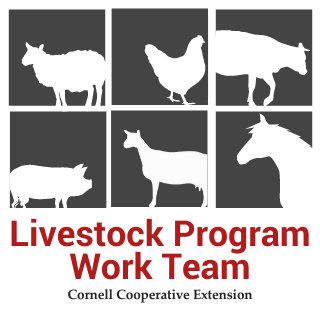CCE Livestock Program Workteam
News, Updates & Recent Publications
Managing Predation in Poultry Flocks
Finally, spring is in the air! It's the time of year where everything is waking up, including predators. Foxes are having their kits, coyotes are having their pups, and birds of prey are migrating to their northern breeding grounds. The lean winter season coupled with the fact that most prey species have not yet had their young means that predatory species are hungry… and poultry are the prefect meal.
Did the Breeding Take? Pregnancy Verification Options for Your Momma Cows
Breeding is an important time of year for beef producers in that its success will determine the number of calves on the ground the following season. Many beef enterprises run on thin margins, and a cow that's not producing a calf is not pulling her weight.
So, What Adds Value to a Beef Calf?
With the costs of doing business going up, farms that raise beef calves need to take steps to help increase the return on investment from their feeders. This can be achieved through pre-conditioning, or setting their animals up for success when moved to the feedlot. The move to the feedlot from a pasture-oriented home is a huge change, and while there will naturally be depressions in rate of gain, there are also chances for increased illness and death of animals that are not pre-conditioned. No one wants an animal to die while in their care - both from welfare and financial standpoints. While some market channels don't pay high premiums for pre-conditioning, others will because they understand the value added by the farmer from birth through the pre-weaning period.
Dealing with Lice on our Ruminant Species
There are a few parasites that producers will interact with over the course of keeping stock. One of those is the humble louse. Lice are small, about the size of a pinhead, and can be hard to spot unless either a.) you're looking for them or b.) they're in such large numbers that they are causing discomfort to the animal.

